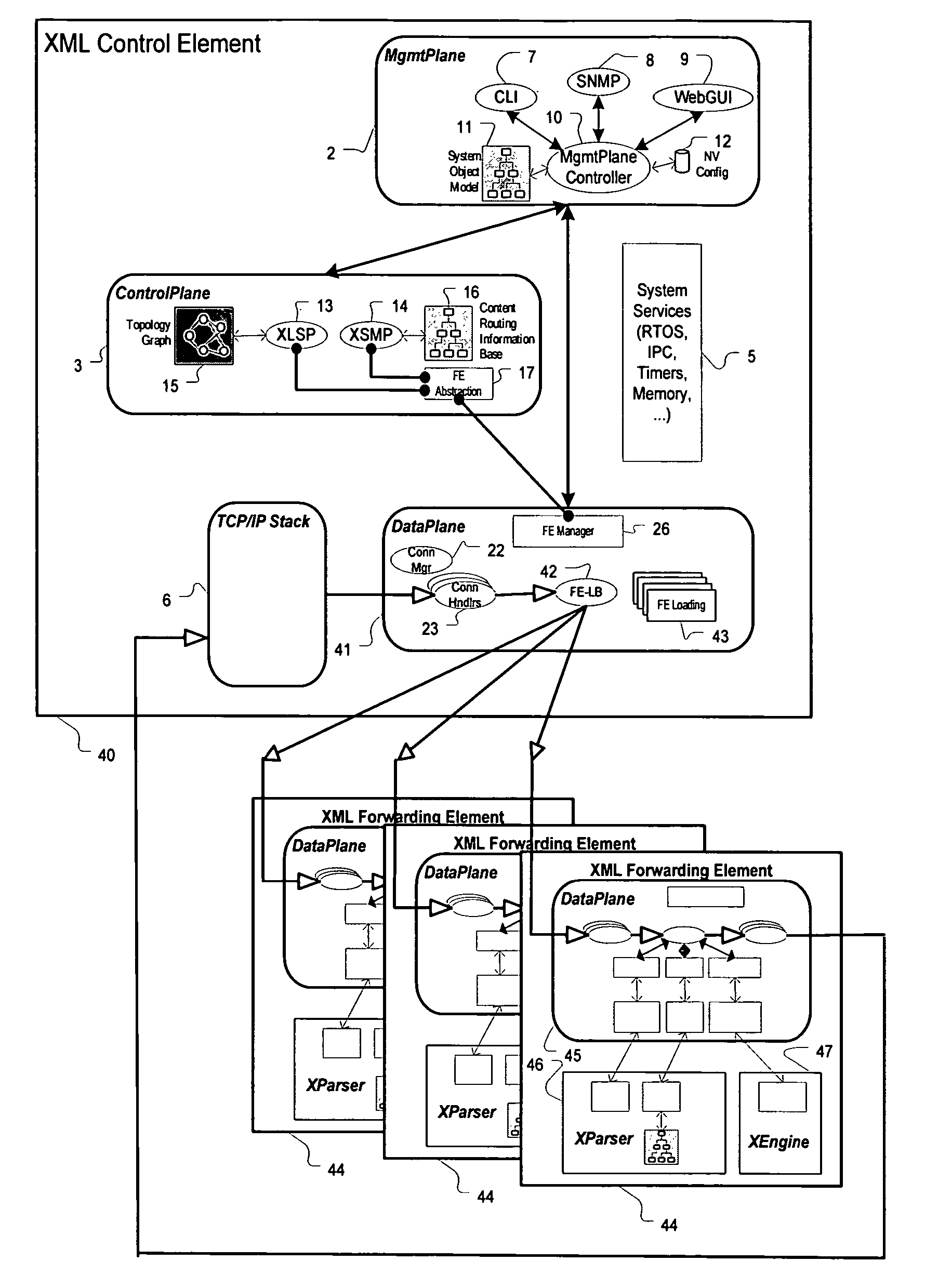Content router with multiple forwarding elements instantiated on hardware entities
a content router and hardware entity technology, applied in the field of carrier-grade content routers, to achieve the effect of sufficient forwarding data rates
- Summary
- Abstract
- Description
- Claims
- Application Information
AI Technical Summary
Benefits of technology
Problems solved by technology
Method used
Image
Examples
Embodiment Construction
[0039]FIG. 1 depicts a carrier class XML router employing a software based architecture 1. The architecture is sub-divided into three distinct “planes”; the Management Plane 2, the Control Plane 3 and the Data Plane 4. In addition, there are System Services 5, which consists of items such as a real-time operating system (RTOS), Inter-Process Communications (IPC), timers, memory management, and the like. Additionally, there is a TCP / IP protocol stack 6, as TCP over IP is preferentially used as the communications protocol between content routers. The roles and key design points of each plane will now be described.
[0040]The management plane 2 is responsible for two main functions:[0041]1. Housing all externally visible management applications (e.g. CLI 7, SNMP 8, WebGUI 9).[0042]2. Coordinating and relaying management requests from the external world (via CLI 7, SNMP 8, WebGUI 9, etc.) to the appropriate underlying application code in the router.
[0043]The first function is accomplished...
PUM
 Login to View More
Login to View More Abstract
Description
Claims
Application Information
 Login to View More
Login to View More - R&D
- Intellectual Property
- Life Sciences
- Materials
- Tech Scout
- Unparalleled Data Quality
- Higher Quality Content
- 60% Fewer Hallucinations
Browse by: Latest US Patents, China's latest patents, Technical Efficacy Thesaurus, Application Domain, Technology Topic, Popular Technical Reports.
© 2025 PatSnap. All rights reserved.Legal|Privacy policy|Modern Slavery Act Transparency Statement|Sitemap|About US| Contact US: help@patsnap.com



